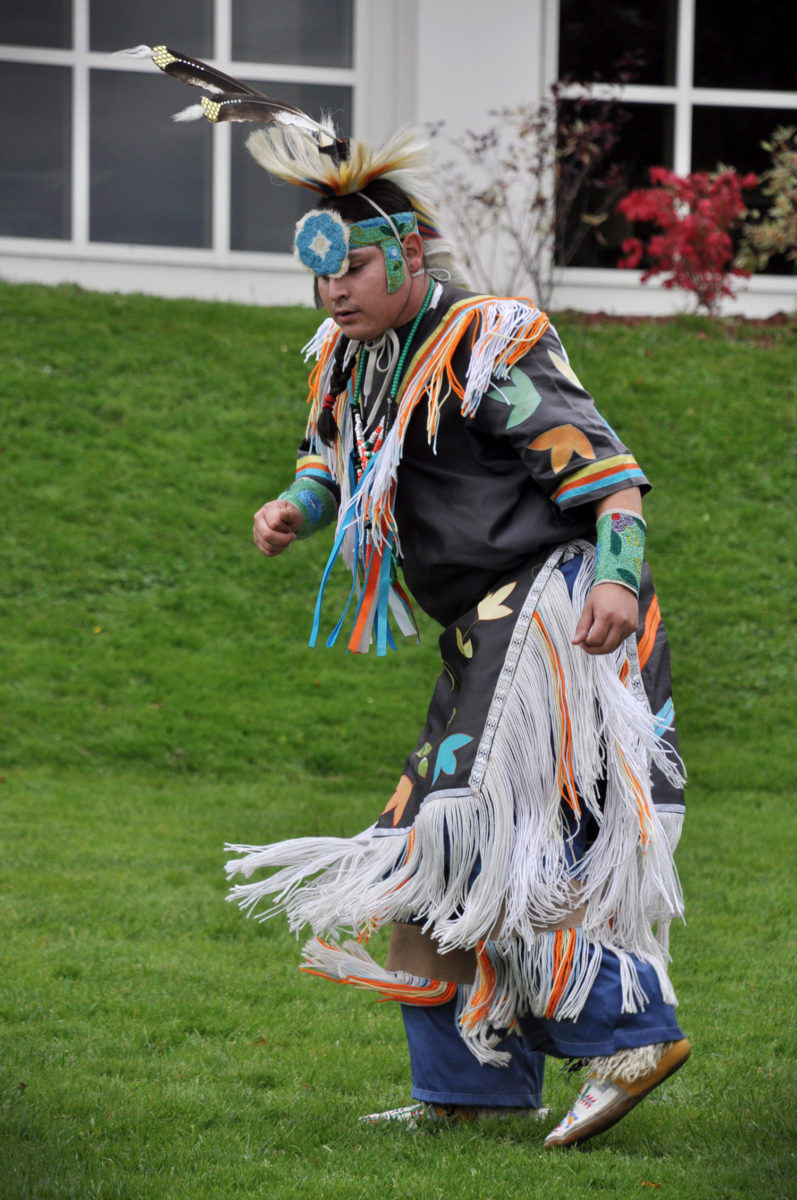
Four campuses came together for the third annual aboriginal orientation powwow on Saturday.
“We want to welcome everyone from St. Thomas and UNB and other campuses, and for the families and the new students and their family and friends, create a sense of comfort and a sense of home,” said STU’s elder in residence, Miigan’agan.
Students from STU, UNB, NBCC, the New Brunswick College of Craft and Design and others from the community descended upon the SUB courtyard to take in First Nation culture, including traditional food, music and dance.
Third year native studies major Cody Clair was finding comfort, as he danced in what he calls his “regalia,” a dark grey outfit with contrasting bright orange, blue and white string tassels.
“Some people call what I’m wearing a costume, but a costume signifies that you’re trying to be something that you’re not. This isn’t who I’m trying to be. This is who I am.”
It was cool and overcast outside, but there was warmth in this gathering.
Jingle-dancers danced to the beat of the drums in colourful dresses covered in rows upon rows of silver metal cones.
Two different drum groups played an integral part together, setting the beat for dancers and singers, including songs the drummers sung themselves.
“It’s a real inclusive activity that we do. It helps strengthen bonds,” said Clair.
Children were invited to play during the “Candy dance.” While the drummers kept a beat, children would dance around on the same grass stage as the dancers. When the drummers stopped performing, the children would rush to collect candy off the ground. When the beat picked back up the children would stop collecting and continue dancing.
While all of this went on, people of different generations, educations and cultures ate salmon, moose, berries and potatoes and talked to each other.
“I really enjoy seeing everybody milling about, talking to one another, listening to the music and having a good time — just feeling ‘set-up’ here,” said Bryan Harn, who has been helping to organize the powwow since its inception.
He works with UNB’s Mi’kmaq and Maliseet institute, which played a big role in putting together this event.
“The whole idea behind it was just to come together and show students that even though there is a home for you on your specific campus… there’s a wider network of aboriginal students that you can meet and you can come to lean on,” Harn said.
